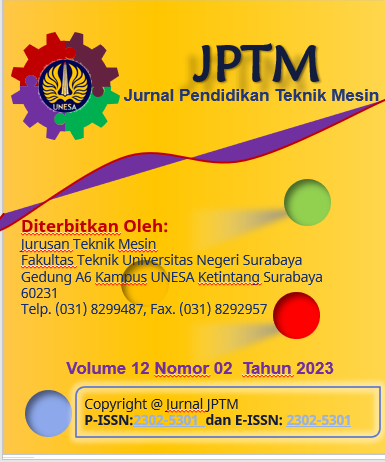PENGARUH MODUL MASTERCAM X9 CNC MILLING TERHADAP HASIL BELAJAR SISWA SMK NEGERI 7 SURABAYA
Keywords:
pengaruh, modul, cnc milling, hasil belajarAbstract
Abstract
The skills of students in using CNC machines are an important aspect that needs attention. The lack of
modules related to CNC material is one of the problems faced by SMK Negeri 7 Surabaya. In addition, the
right learning resources can stimulate students to be able to learn independently and make learning more
student center. Previous research has shown that the application of CNC modules can improve learning
outcomes. In this study, researchers focused more on determining the influence of the CNC Mastercam
module on learning outcomes and the implementation of the learning process. From the research
conducted by researchers, the instruments used in the study had a validation value of 87% which showed
very good criteria. Research instruments include instruments, questions, response questionnaires, and
lesson plans. For the implementation of learning activities showed very good results with an average of
4.13 with a percentage of 82.6%. In addition, testing of learning outcomes is carried out by providing pretest and post-test to students. The results showed a significant difference with a calculated t value of 6.66
and the resulting effectiveness was included in the high category with an N-Gain value reaching 0.73. In
addition, student responses showed that participants responded to learning with the Mastercam x9 CNC
module very well with a score obtained of 88.5%.
Keywords: Influence, module, CNC Milling, learning outcomes.
Downloads
Downloads
Published
Issue
Section
 Abstract views: 116
,
Abstract views: 116
, PDF Downloads: 111
PDF Downloads: 111





